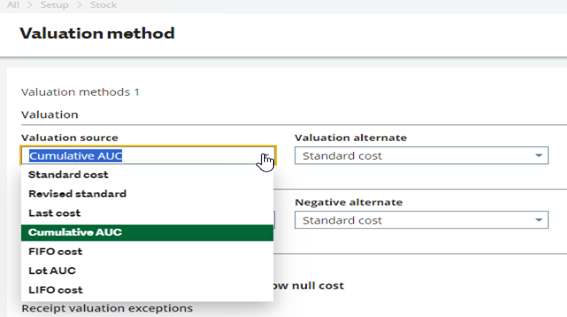Santa Claus isn’t the only one checking a list at this time of year. Consider me the Grinch reminding, you that year-end is just around the corner, and it is time to review your year-end task list.
Your year-end task list and notes are the most important documents for your year-end close. It’s where you record what went well and what didn’t in prior closes. It’s where you note what information / reports that you…
When running Material Requirements Planning MRP in Manufacturing, Planning, MRP processing or Stock, Reorders, MRP processing, the type of the planned order created by MRP depends on the setting of the Suggested type that is selected in Common data, Products, Product-site, Planning tab. There are several suggestion types:
No suggestion: When no selection is made for the reorder mode or the suggestion type. This can be…
Hi Readers,
Today’s blog posting will be a short review of the new features / changes made to the installation process for our latest release of 2023R2 (12.0.34). All of these changes you will find are located within the Sage X3 Management Console (aka SAFE Console). Let’s take a peek, shall we?
First up are the updates to SQL Server Module. As we learned in our previous release, SQL Server Module 22 was not…
Working with suppliers, sometimes the balances can get out of sync. When this happens, in Sage X3, there is a utility called Supplier balances resync in the Purchasing, Utilities section. This utility is used to resynchronize the balances of a business partner when they are out of balance.
When accessing this utility, it is possible to run it for all companies or a specific company. Also, you can select all suppliers or…
User & Table auditing in X3
Welcome to another blog, today we will discuss the auditing capabilities of X3 and tools available to use when looking to audit or investigate problems potentially related to a user, table, or session.
Let’s begin this journey by activating auditing on the status field of products, so we can track any changes made to the products status.
*Note: I will be using the “Products” table…
Time to go on our sixth thrilling adventure exploring the automatic journals and see what determines which auto journal will be used. Our previous travels have taken us through:
Before I proceed…
Sage is continuing to add more features and functionality to mobile automation.
Online help center provides a detail how to on most of the transactions and functionality.
Under “Recent How to guides” you can find a link to “Mobile Automation (ADC) for distribution” and another for Manufacturing.
LPN is managed in pick tickets, and it will display only when the following conditions are met:
Valuation methods can be found in Setup, Stock, Valuation methods. This function is used to select the primary valuation that is going to be assigned to a product. Several valuation methods are available for selection based on the country's legal requirements:
Standard cost, Revised cost, Last cost, Cumulative AUC, FIFO cost, Lot AUC, and LIFO cost.

Once the valuation is assigned to a product, the system will value…
Good day and welcome to FY24..
Let’s kick things off with this blog regarding a newly added feature when running exports from the management console.
What is Multithreading?
Multithreading is a form of parallelization or dividing up work for simultaneous processing. Instead of giving a large workload to a single core, threaded programs split the work into multiple software threads. These threads are processed in…
It seems like most of our Accounts Receivable time, after sending out invoices, is devoted to chasing down payments. For this, the blog Bad debts management and AR Write-offs comes in handy. Every once in a while, customers don’t just pay us, but they overpay us. Let’s look at what we can do with overpayments.
Overpayments can be dealt with in several ways. You can apply the overpayment to an existing invoice…